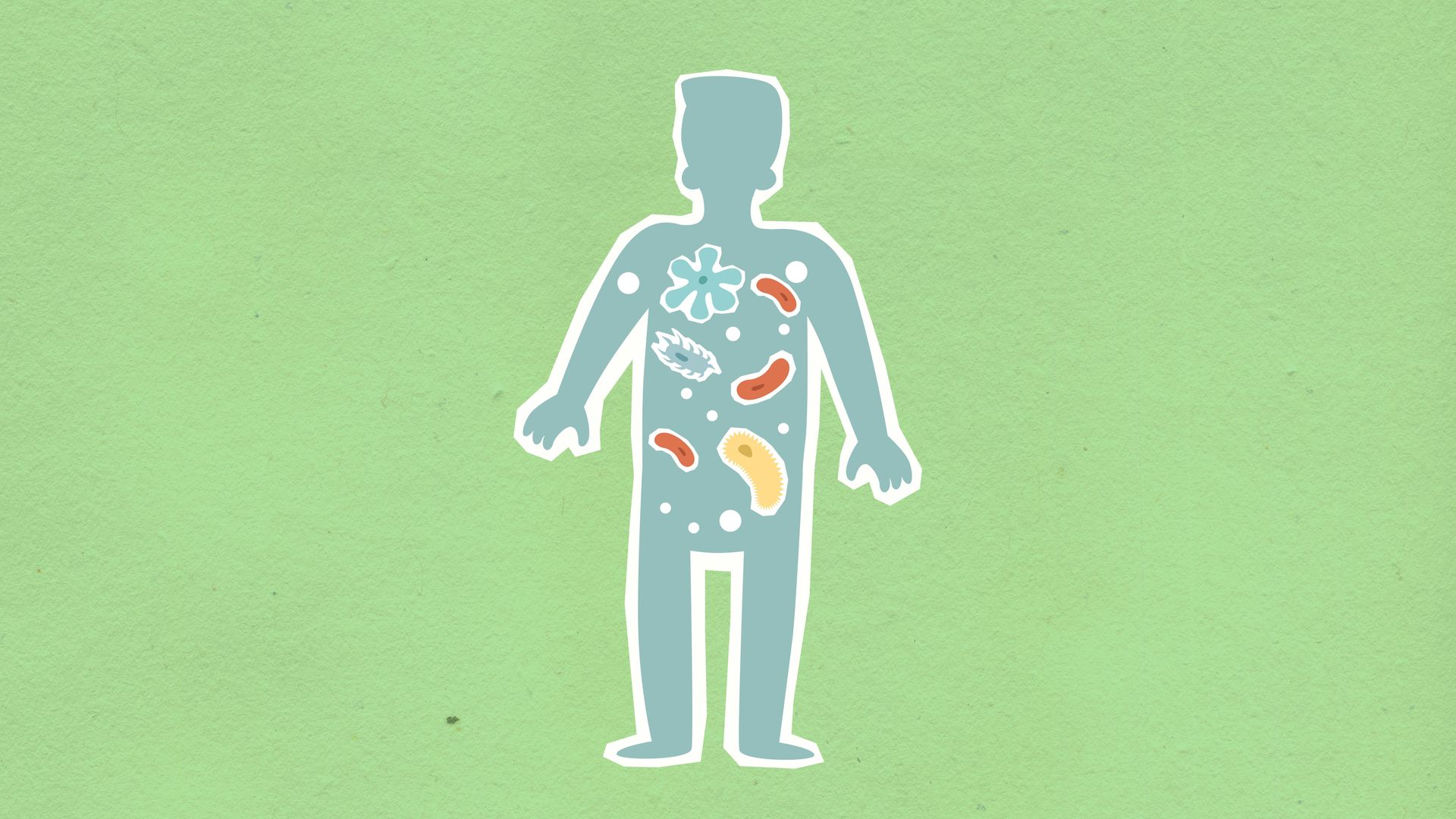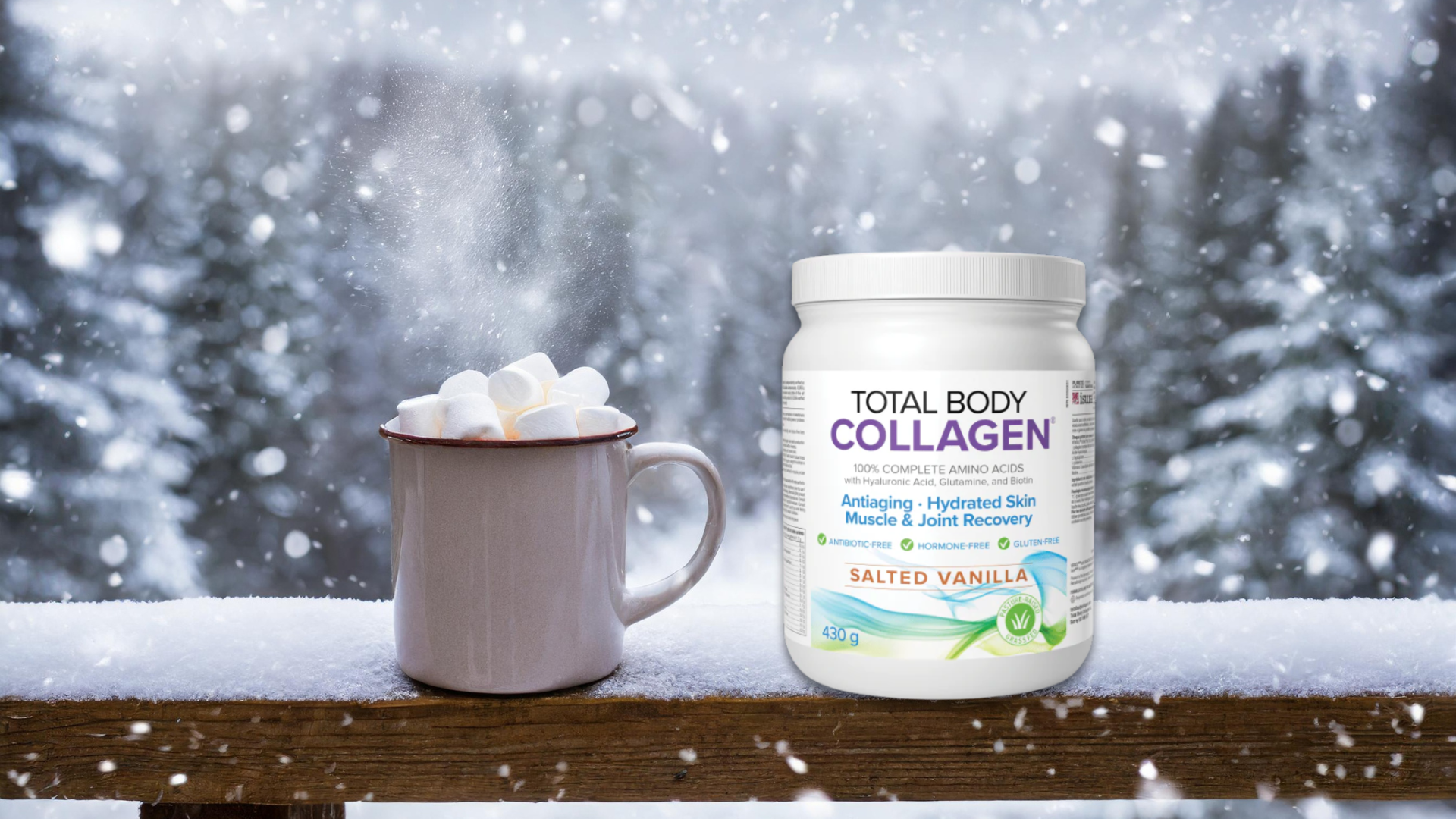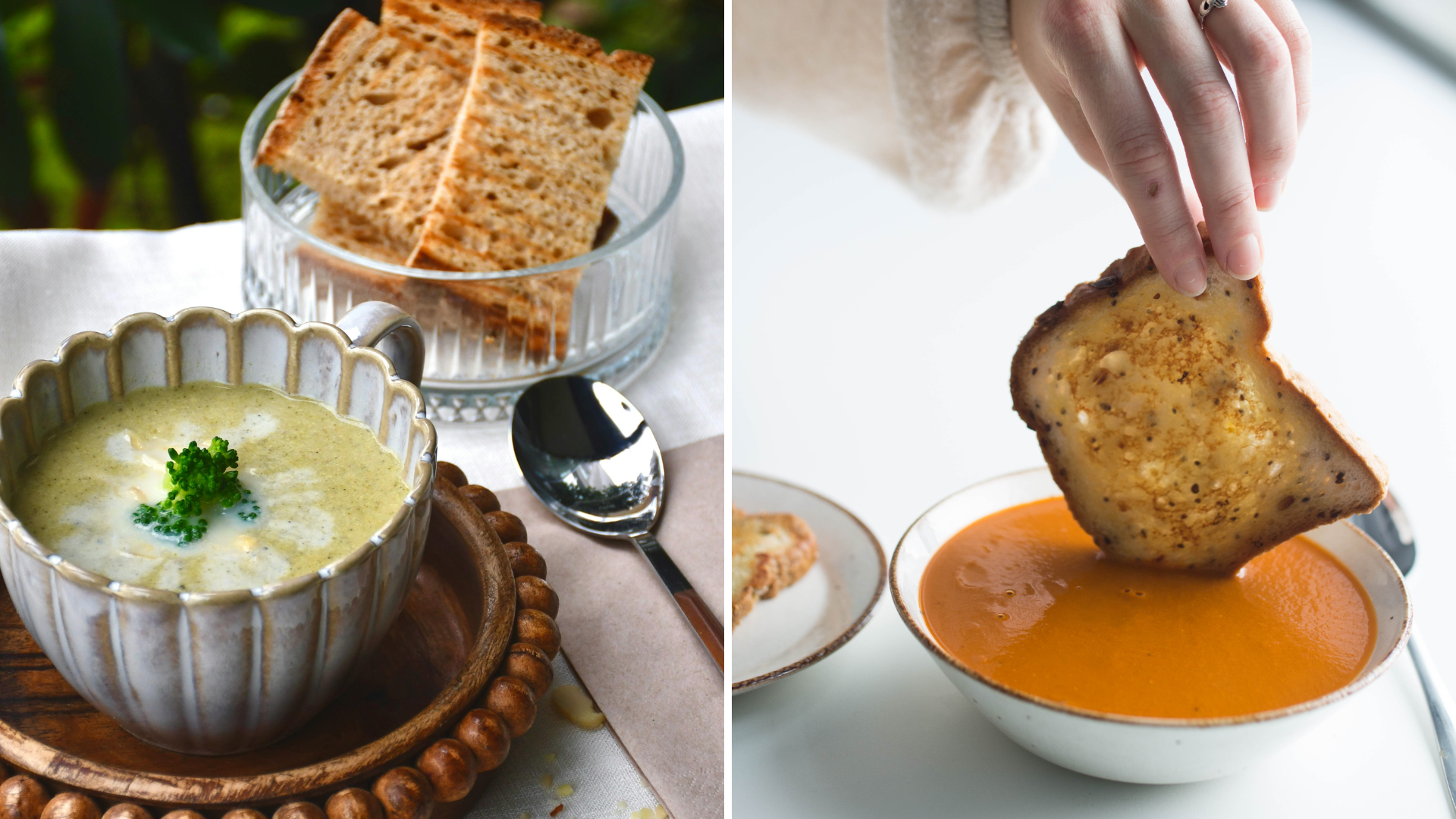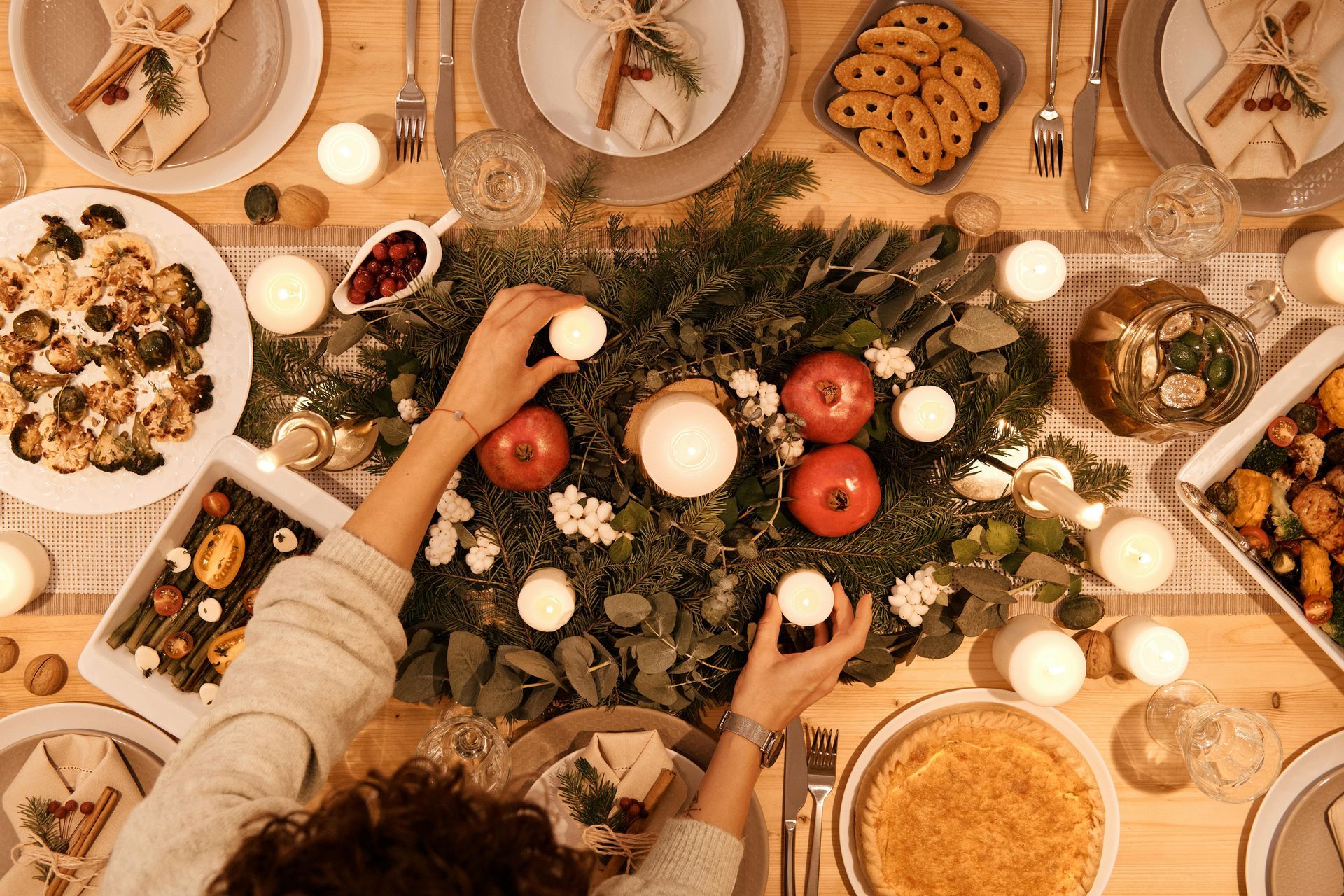Supporting Your Microbiome
Your body is home to trillions of microorganisms that play a vital role in your overall health. These tiny communities—your microbiome—exist in different areas, including your gut, mouth, lungs, skin, and, for women, the vaginal flora. When balanced, it supports digestion, immunity, and even mood regulation. But when disrupted by factors like poor diet, stress, or environmental factors, it can contribute to a range of health issues.
In this blog post, we’ll explore how to nourish and support these essential microbiomes to help you feel your best from the inside out. And we'll discuss how they're all interconnected.
The Rundown on your Microbiome
The microbial communities in the body make up the human microbiome. These communities are made up of bacteria, viruses fungi, and other cells that live on and inside out bodies. The microbiome is essential to our health as it produces beneficial compounds like vitamins and anti-inflammatories, is home to good bacteria, and is important for many processes in the body like proper digestion and a healthy immune system.
Where do these microbial communities exist in the body?

The Gut Microbiome
The largest and most-known is the Gut Microbiome, Gut Microbiota, or Gut Flora. The gastrointestinal tract is home to bacteria, archaea, and eukarya that play important roles in maintaining the health of the gastrointestinal system. The Gut Microbiome, when healthy, helps with digestion, nutrition, and the regulation of glucose, lipids, insulin, and inflammation.
Recent studies have also found a link between gut health and brain health! There are trillions of microbes in the gut that make chemicals that affect how our brains work - such as short-chain fatty acids and metabolizing bile acids and amino acids.
How do I Support my Gut Microbiome?
Here are some ways that you can help your gut flora flourish:
Fibre, fibre, fibre! A fibre rich diet feeds the good bacteria in the large intestine, which helps strengthen the immune system. Fibre also helps clear out bad bacteria and other unwanted buildup or waste in the intestines. When the microbiota consume fibre, they release acids that keep the colon healthy. Fibre rich vegetables like leeks, onions, and broccoli, fruits like raspberries, pears, and apples, and grains like barley and quinoa, and legumes like lentils and chia seeds are all great options.
Avoid those processed foods. Processed foods and those high in sugar can change the balance of the gut bacteria and lead to inflammation.
Probiotics and Prebiotics are gut-friendly! Probiotic foods like fermented foods (kimchi, kefir, sauerkraut, yogurt), prebiotic foods like whole grains and those high-fibre foods, and probiotic supplements all contribute to healthy gut flora.
Get moving! It may seem far-fetched, but exercise is very important for gut health. It helps your digestive tract find its natural rhythm which can reduce bloating and gas. It also increases blood flow to the gut and can improve the integrity of your intestinal barrier.
Check out this episode of The Wellness on Purpose Podcast on Improving Gut Health!

The Lung Microbiome
"Long considered to be a sterile environment, it is now clear that the human lungs are frequently exposed to live microbes and their by-products." Natalini et al, 2022.
The Lung Microbiome is different from other microbial communities in that it is in constant flux, with microbes entering and exiting regularly as we breathe. There are many mechanisms within the respiratory tract, such as cilia, that keep the lung microbiome mobile and move mucus, microorganisms, and foreign particles out of the lungs.
A healthy lung microbiome is crucial for maintaining respiratory health, regulating the immune response, and preventing inflammation and the development of lung diseases. There is also evidence of communication between the lungs and and gut microbiota - the gut-lung axis!
How do I Support my Lung Microbiome?
A Healthy Diet. Because the gut microbiome and lung microbiome are connected, those fibre-rich probiotics and prebiotic foods are even MORE important! Anti-inflammatory foods like fatty fish, berries, and leafy greens are also important. Hot herbs and spices have a thinning effect on mucous in the lungs – try turmeric, chili peppers, cayenne, ginger, garlic, and cloves.
Keep Moving & Breathe Deeply. Exercise and practices like yoga help strengthen your lungs. Perform a cleansing breath a few times a day. Inhale slowly through the nose filling the lungs down to the abdomen then exhale fully, but before inhaling again, open your mouth and puff out saying ha-ha-ha-ha until you cannot puff again. You will probably be coughing, or laughing, but gases will be clearing, and your lung capacity will be just a little bit better each time. You may experience dizziness at first so sit down for your first several breaths.
Seek Supplemental Help.
- Vitamin A helps protectsthe delicate mucous membrane of the lungs.
- N’Acetyl Cysteine (NAC) thins mucous accumulation, strengthens lung tissue, supports glutathione production to improve immune response.
- Serrapeptase is a proteolytic enzyme when taken on an empty stomach scours the body and digests waste in lungs and elsewhere.
- Holy Basil tea is known as the Mother of All Herbs in India. It reduces stress, regulates blood pressure and cholesterol, and is known to benefit all respiratory conditions.

The Oral Microbiome
Let's talk about the mouth: The Oral Microbiome. This is the collection of microorganism that live in your mouth. I know, it might sounds gross - but it's not, as long as you take good care of it. The Oral Microbiome is the second largest microbial community in the body after the gut! About 50-100 billion bacteria live in the average adult's mouth.
As you can guess, the oral microbiome is associated with oral health and disease. But it also can be a biomarker for non-oral diseases such as cardiovascular diseases, diabetes, and pneumonia. When 'bad' oral bacteria enters the bloodstream, it can trigger inflammation throughout the body. The oral microbiome is also linked to the gut microbiome.
How do I Support my Oral Microbiome?
Oral Hygiene. Practice good oral hygiene by brushing your teeth twice daily, flossing regularly to remove plaque and food debris, preventing harmful bacteria growth.
A Healthy Diet (yes, this again). Limit sugar - excessive sugar intake feeds bad bacteria that contribute to cavities. Those fibre rich and probiotic foods help promote healthy bacteria growth. Drinking plenty of water helps wash away food particles and supports saliva production.
Probiotics. Probiotic supplements and foods promote friendly bacteria, creating a biofilm that protects your teeth and gums. Probiotics help reduce inflammation in the gums and keep 'bad' bacteria from penetrating your enamel.
Tools & Tricks. Ayurvedic Oil pulling can help reduce harmful bacteria in your mouth. Oil pulling involves swishing coconut oil around the mouth like a mouthwash - it has been found t reduce bacteria that contributes to plaque buildup and tooth decay. Tongue scrapers are another tool that can remove debris and bacteria from the tongue. We carry the Mintier tongue scraper!

The Skin Microbiome
Your skin is your largest organ! It's got trillions of microorganisms, bacteria, and fungi that makeup up its microbiome. Like the above, they play an important role in your overall health. Some microbes on the skin act as natural antibiotics and keep our skin acidic, which many germs don't like. They also help the immune system function - acting as a warning sign that alert your immune system to harmful bacteria. Signals from your skin microbiome also activate or de-activate your immune system to help you heal wounds and control inflammation!
Changes in your Skin Microbiome (dysbiosis) is linked to skin conditions such as eczema, psoriasis, acne, and rosacea. The Gut and Skin Microbiomes are also very closely related. The balance of bacteria in the gut can directly affect the health of your skin. Inflammation in the gut can spread to the skin. Poor gut health can also make it difficult for the body to absorb nutrients like vitamin A, C, E, and Omega-3s which are important for skin health.
How do I Support my Skin Microbiome?
Go Easy on the Sanitizer! The balance of your skin microbiome can be disrupted if you clean your skin too much, especially with harsh antibacterial sanitizing products. Instead, use gentle hand washes or sanitizers with hydrating ingredients like essential oils and glycerins.
Moisturize, moisturize. Ultra-moisturizing ingredients like hyaluronic acids, shea butter, glycerin, and tallow give your skin barrier a boost! Stay away from harsh ingredients found in some traditional creams like parabens, fragrances, and phthalates - these can dry out your skin and damage good bacteria. Add 2-3 drops of frankincense oil to your daily moisturizer to protect and regenerate.
Skin-Loving Supplements.
- Vitamin B Complex – promotes circulation to the skin.
- Vitamin C – necessary for collagen production.
- Vitamin D – 4,000 IU – inflammation fighter.
- Essential Fatty Acids – Omega 3’s and GLA
- Do an annual liver cleanse and use liver loving herbs like milk thistle, dandelion, and turmeric on a regular basis. Skin health also reflects liver and lymphatic health.

The Vaginal Microbiome
The Vaginal Microbiome plays a crucial role in maintaining overall vaginal health, protecting against infections, and supporting reproductive wellness. This delicate ecosystem is primarily composed of beneficial bacteria, such as Lactobacillus species, which help maintain an acidic pH, preventing the overgrowth of harmful microbes like yeast and pathogenic bacteria.
A balanced microbiome reduces the risk of conditions such as bacterial vaginosis, yeast infections, and urinary tract infections, while also supporting immune function and hormonal balance.
How do I Support my Vaginal Microbiome?
Factors like diet, stress, antibiotics, and hygiene practices can impact the microbiome, making it essential to nurture its health through probiotics, proper nutrition, and lifestyle choices. Prioritizing vaginal microbiome balance contributes not only to comfort and well-being but also to long-term reproductive and gynecological health.
Probiotics. There are amazing probiotics that are specifically designed to support vaginal health from brands like Genestra and Living Alchemy. Probiotic foods are also helpful!
Keep it Simple. When it comes to the vulva, it is best to keep things simple. Wash the vulva with water and mild, unscented soap - keep harsh chemicals and fragrances away! The same goes for menstrual products - a study came out last year that found toxic metals in traditional tampons and pads. This is why we love brands like Natracare and Joni that use Organic Cotton and NO harsh chemicals or plastics in their products.
Check out our podcast episode on
Women's Flora, Hormones, and Happiness and our episode on
Preventing & Treating Vulvovaginal Candidiasis.










